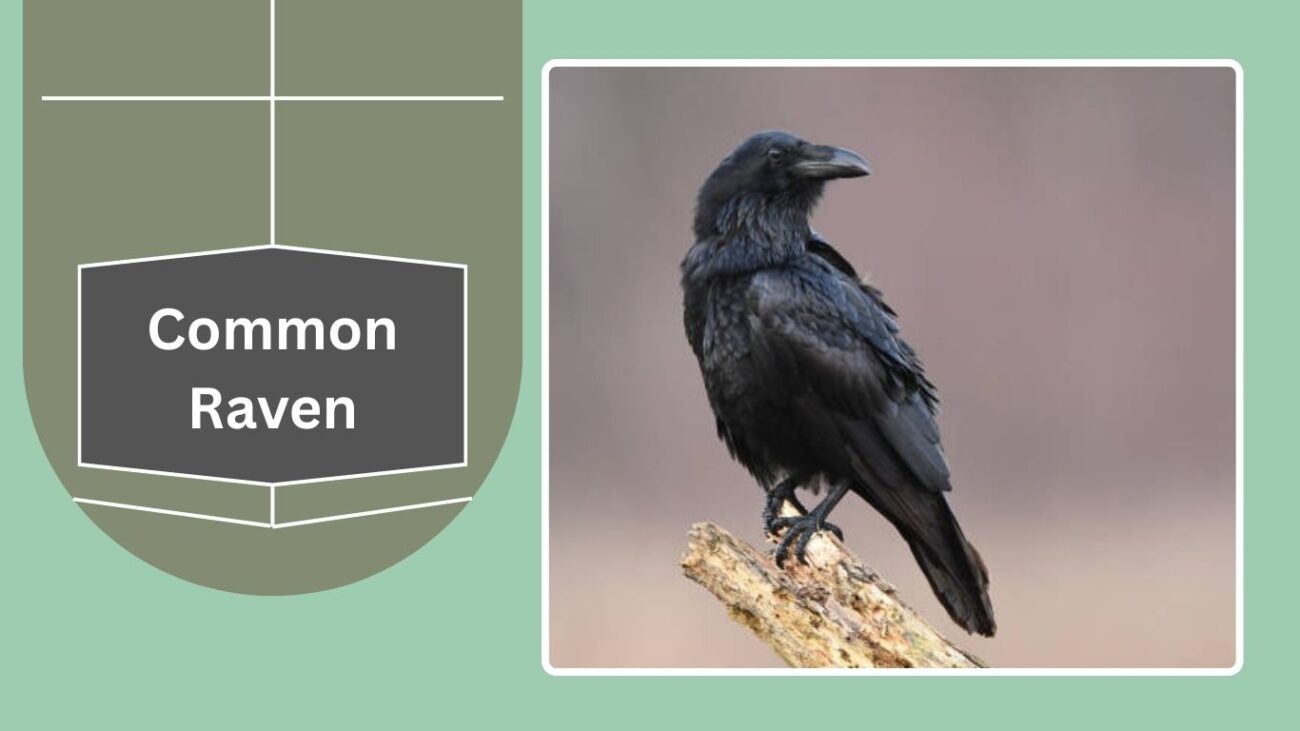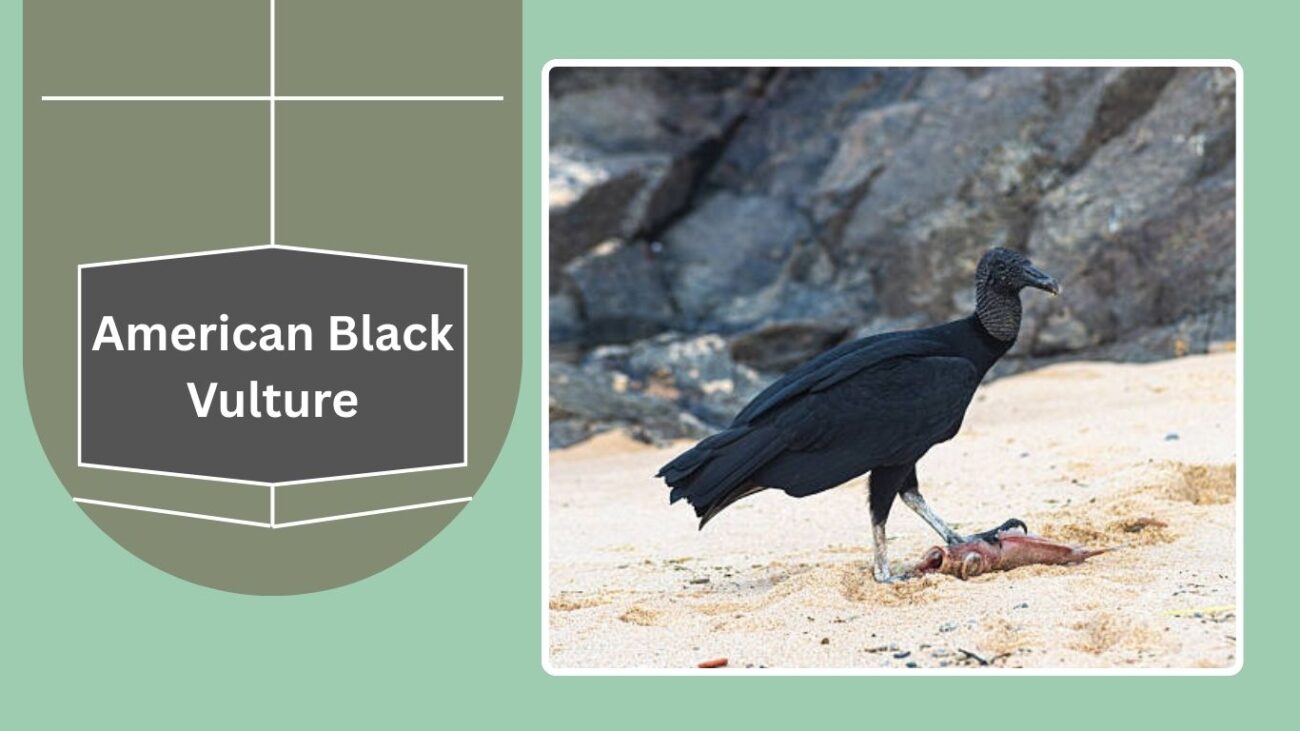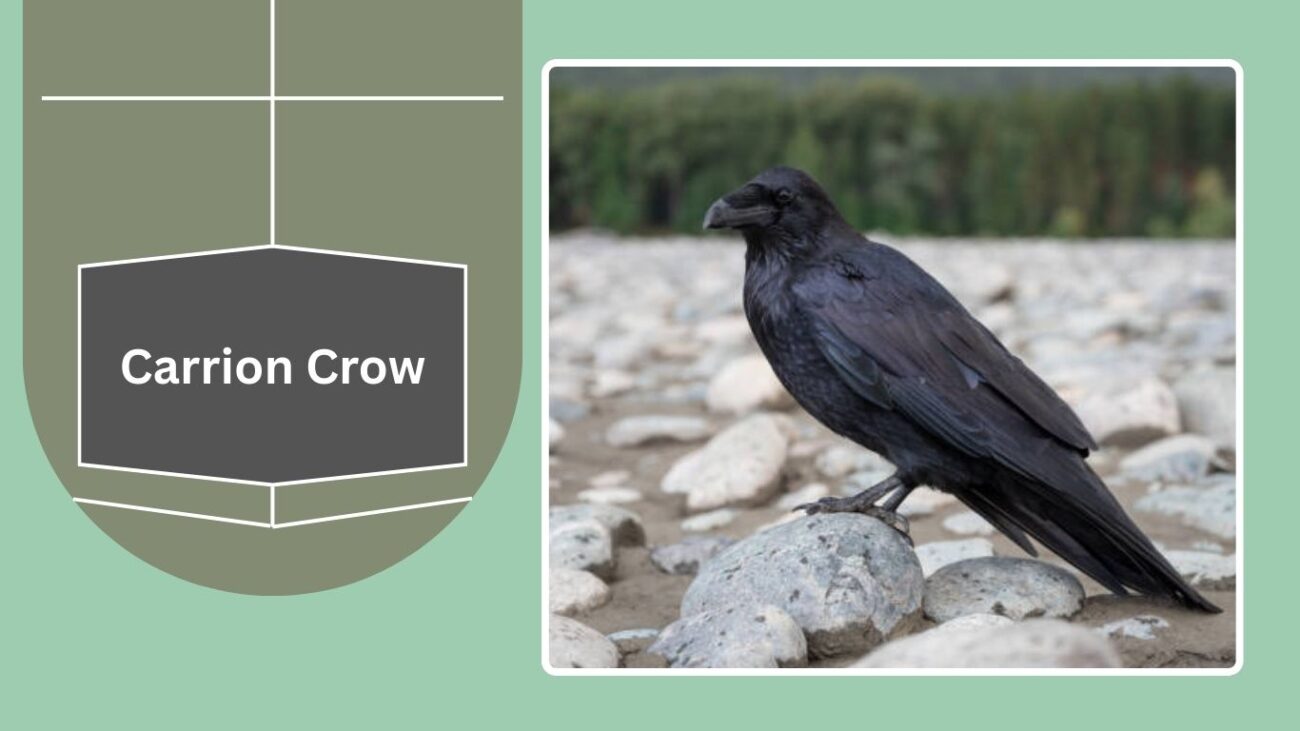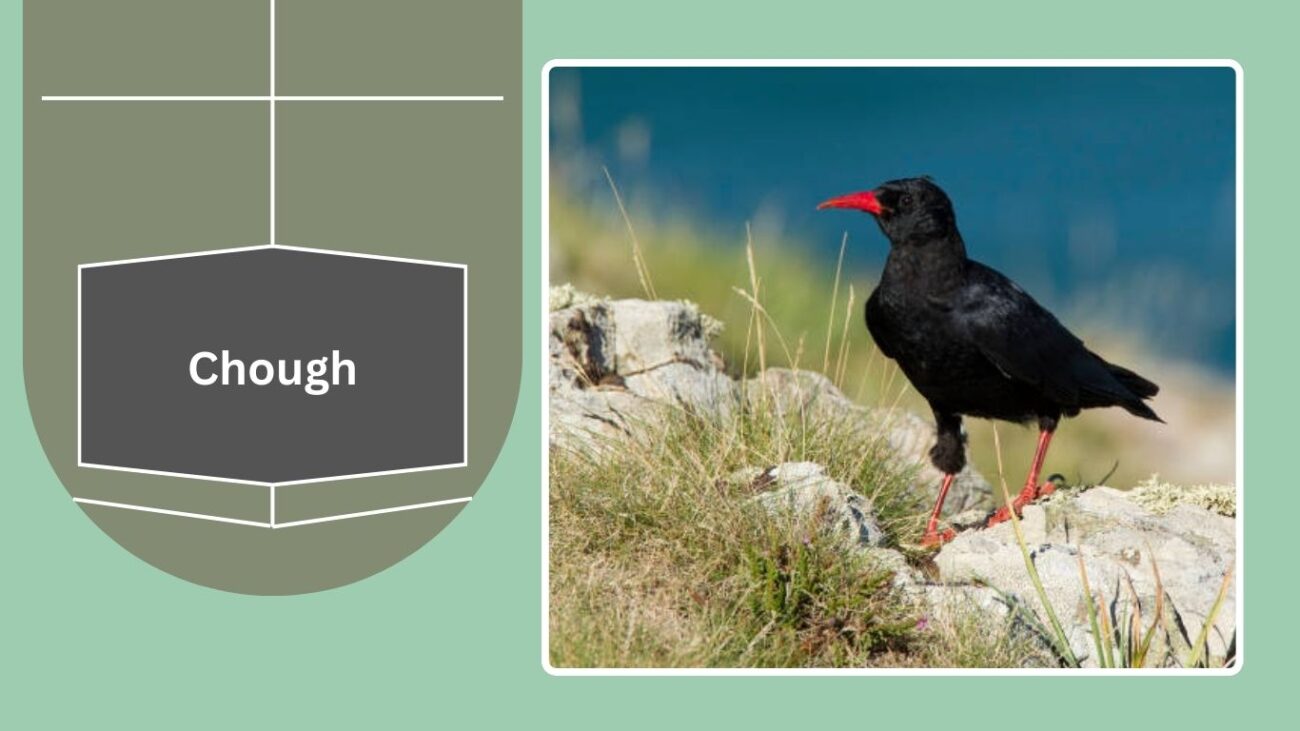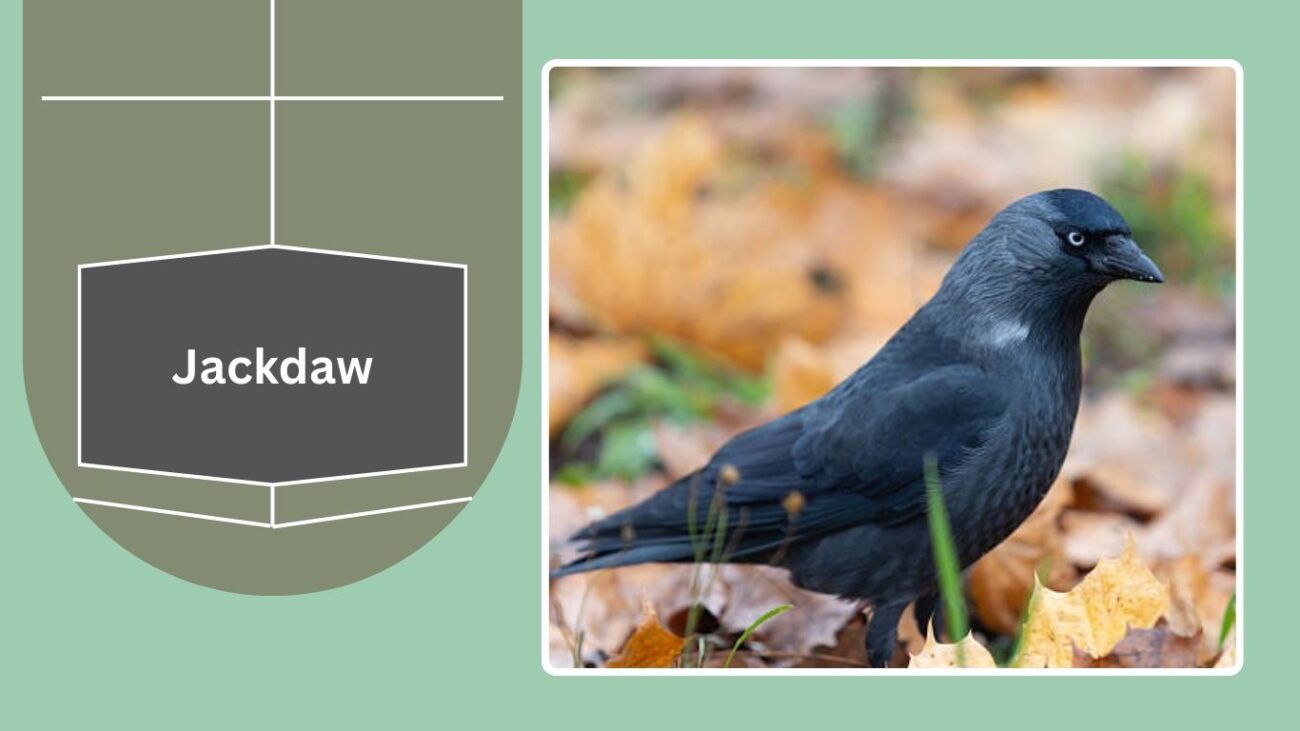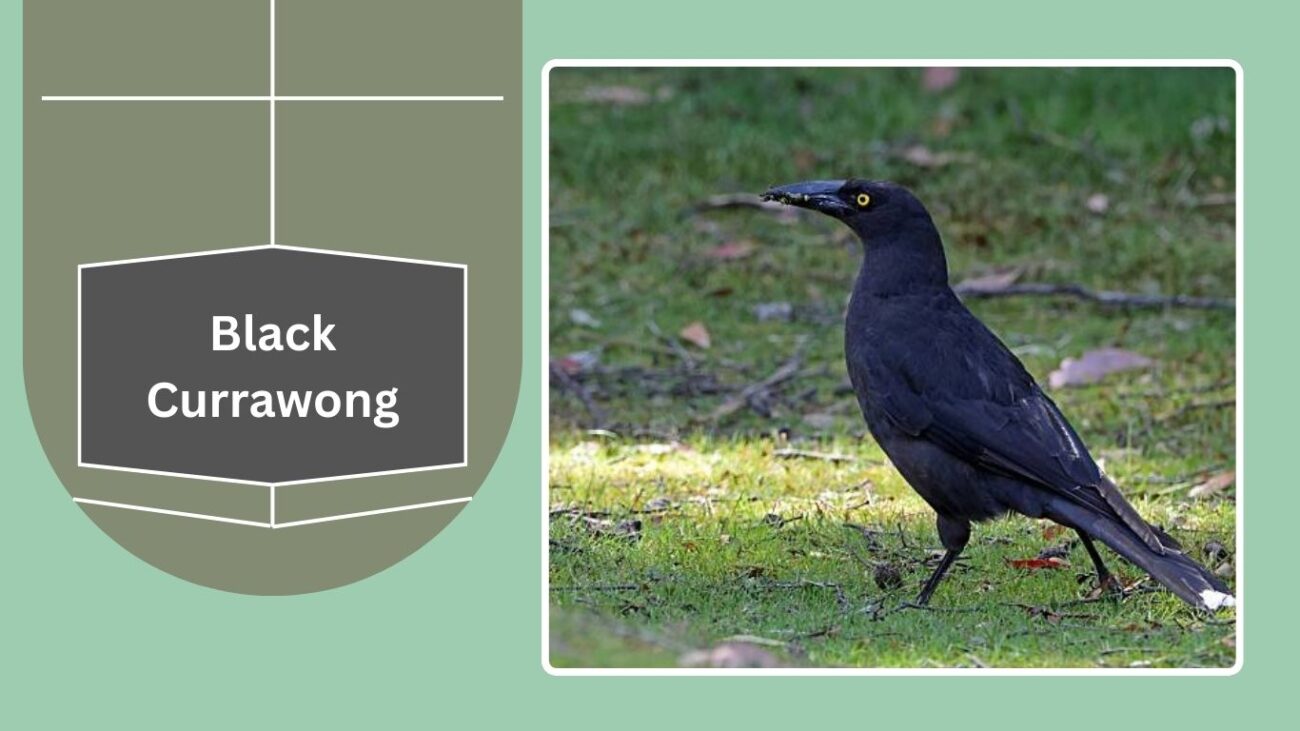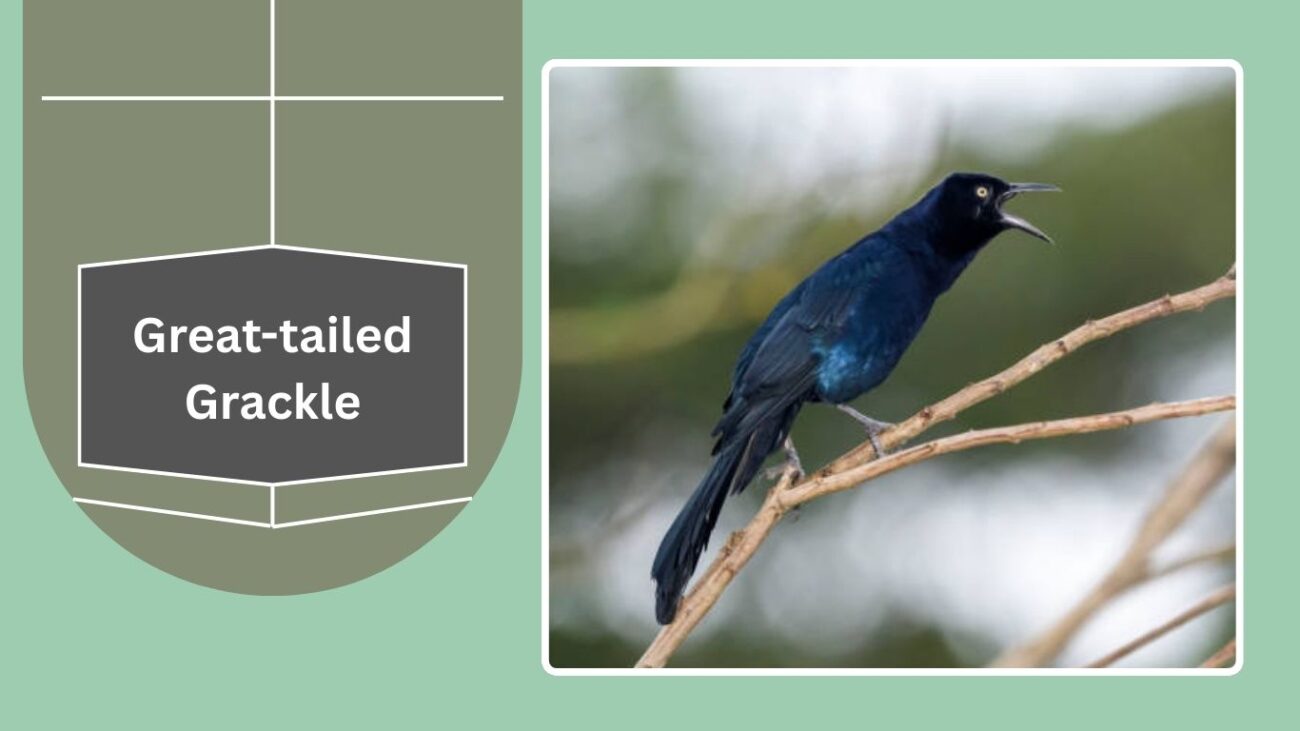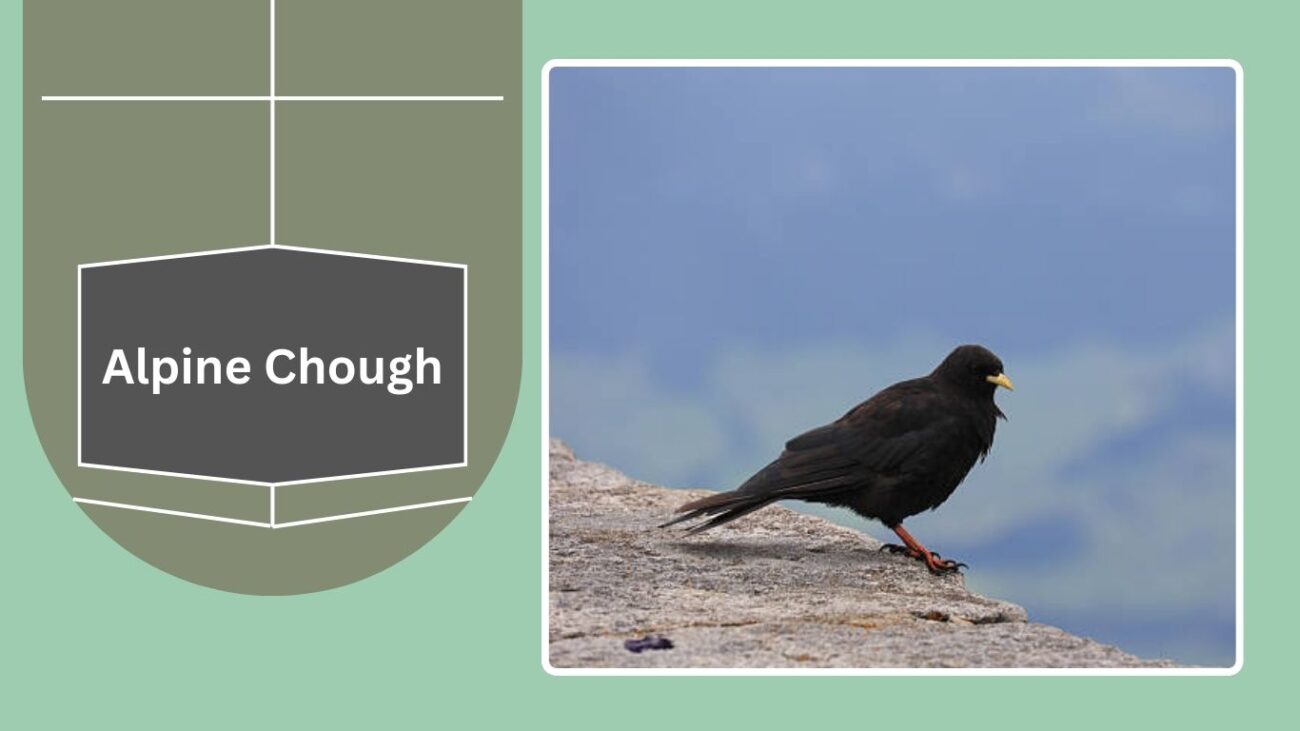Many large black birds are often mistaken for crows due to their dark plumage and similar body shapes. However, each species has its own unique traits, calls, and behaviors that set it apart. From ravens to vultures and mountain-dwelling choughs, these birds are fascinating to observe and study. In this guide, we’ll explore ten black birds that resemble crows, along with their identification details and habitats.
1. Common Raven
The Common Raven (Corvus corax) is one of the largest black birds in the world and is often mistaken for a crow due to its jet-black feathers and intelligent behavior. Known for its adaptability, the raven thrives in diverse habitats ranging from forests and deserts to coastal regions. Its deep, croaking call and acrobatic flight distinguish it from true crows.
Identification
- Size: 22–27 inches in length, wingspan up to 4 feet.
- Color: Entirely black with a glossy, iridescent sheen.
- Bill: Large, thick, and slightly curved.
- Tail: Wedge-shaped, visible in flight.
- Voice: Deep, guttural croak unlike the “caw” of crows.
Habitat
Common Ravens are widely distributed across the Northern Hemisphere. They inhabit woodlands, mountains, tundra, deserts, and even urban areas where food is readily available.
Diet
Ravens are omnivorous scavengers. Their diet includes carrion, small animals, insects, seeds, grains, and food scraps. They are also known to cache food for later consumption.
Behavior
Highly intelligent, ravens demonstrate problem-solving skills, use tools, and even engage in playful activities such as aerial acrobatics. They are often solitary or seen in pairs, unlike crows that usually gather in larger groups.
2. American Black Vulture
The American Black Vulture (Coragyps atratus) is a large, dark bird that is frequently mistaken for a crow or raven due to its black plumage. However, it is actually a scavenging bird of prey belonging to the vulture family. Its shorter tail and broad wings make it stand out in flight, especially when soaring high above open landscapes.
Identification
- Size: Around 23–27 inches long with a wingspan of up to 5 feet.
- Color: Black feathers with a bare, dark-gray wrinkled head.
- Tail: Short and square compared to the longer tails of crows and ravens.
- Flight: Broad wings with white patches near the tips when seen from below.
- Voice: Generally silent, producing only hisses and grunts.
Habitat
American Black Vultures are found in the southeastern United States, Central America, and South America. They prefer open areas such as grasslands, savannas, and agricultural fields but are also commonly seen near towns and highways.
Diet
They primarily feed on carrion, locating dead animals with their keen eyesight and by following Turkey Vultures. Occasionally, they consume eggs, small animals, or food scraps from human settlements.
Behavior
Black Vultures are social and often feed or roost in groups. They rely heavily on thermal air currents to soar with minimal effort, conserving energy while searching for food.
3. Rook
The Rook (Corvus frugilegus) is a large black bird from the crow family, often mistaken for crows due to its similar shape and dark plumage. Unlike crows, rooks have a distinctive bare patch of grayish-white skin around the base of their bill, which becomes more noticeable in adults. They are highly social birds and often gather in large groups.
Identification
- Size: About 16–18 inches in length, with a wingspan around 2.5 feet.
- Color: Glossy black plumage with a purplish or bluish sheen.
- Bill: Long, pointed, with a bare whitish-gray base in adults.
- Legs: Strong and black, suited for walking on fields.
- Voice: Harsh “caw” calls, similar but less varied than ravens.
Habitat
Rooks are commonly found in Europe and parts of Asia. They prefer open countryside, farmland, and grasslands, especially areas with scattered trees for nesting.
Diet
These birds are omnivores, feeding on seeds, grains, earthworms, insects, carrion, and human food scraps. They often forage in plowed fields, walking in groups while searching for food.
Behavior
Rooks are highly social and nest colonially in large rookeries. They exhibit cooperative behavior, often feeding and roosting together. Their intelligence allows them to adapt well to farmland and human settlements.
4. Carrion Crow
The Carrion Crow (Corvus corone) is a medium-to-large black bird that looks strikingly similar to both the raven and the rook. Unlike rooks, carrion crows have a fully feathered bill, and unlike ravens, their tail is more rounded. They are often solitary, unlike rooks and jackdaws, which prefer company.
Identification
- Size: About 17–20 inches long with a wingspan up to 3 feet.
- Color: Entirely black with a slight green or purple gloss.
- Bill: Thick, black, and fully covered with feathers at the base.
- Tail: Rounded rather than wedge-shaped.
- Voice: Hoarse “caw,” deeper than a rook’s but less guttural than a raven’s.
Habitat
Carrion Crows are widespread across Europe and Asia. They thrive in woodlands, farmland, coasts, urban areas, and even mountainous regions, making them highly adaptable.
Diet
As opportunistic feeders, they eat carrion, small mammals, insects, seeds, berries, garbage, and even eggs or chicks of other birds. Their diet closely mirrors that of other corvids.
Behavior
Carrion Crows are usually solitary or found in pairs, which helps distinguish them from rooks and jackdaws. They are intelligent, often using tools and problem-solving skills to obtain food.
5. Chough
The Chough (Pyrrhocorax pyrrhocorax), also known as the Red-billed Chough, is a crow-like bird that can easily be mistaken for a crow or rook due to its glossy black plumage. What sets it apart is its bright red bill and legs, making it one of the most striking members of the crow family.
Identification
- Size: About 15–17 inches in length with a wingspan of 2.5–3 feet.
- Color: Black plumage with a bluish sheen in sunlight.
- Bill: Thin, curved, and bright red.
- Legs: Long and red, contrasting with its black body.
- Voice: High-pitched “chee-ow” calls, sharper than crows.
Habitat
Choughs are commonly found in coastal cliffs, high mountains, and rocky areas across Europe, North Africa, and parts of Asia. They prefer open landscapes with short grass for feeding.
Diet
Their diet mainly consists of insects, larvae, and small invertebrates found in soil or dung. They may also eat seeds and berries, especially in winter when insects are scarce.
Behavior
Choughs are acrobatic fliers, often performing aerial displays with twists and turns. They live in pairs or small flocks and are highly loyal to nesting sites, often returning to the same cliffs or caves year after year.
6. Jackdaw
The Jackdaw (Corvus monedula) is the smallest member of the crow family in Europe, but its black appearance often leads people to confuse it with young crows. It has a distinctive silvery-gray patch on the back of its head and pale eyes, which make it stand out from true crows and ravens.
Identification
- Size: About 12–15 inches long with a wingspan of 2–2.5 feet.
- Color: Glossy black plumage with a grayish nape and sides of the neck.
- Eyes: Pale, almost white or light blue, giving a piercing look.
- Bill: Shorter and more slender than that of crows.
- Voice: High-pitched “jack” call, from which its name is derived.
Habitat
Jackdaws are common across Europe, western Asia, and North Africa. They inhabit farmlands, woodlands, coastal cliffs, and urban areas, often nesting in chimneys, church towers, and tree hollows.
Diet
They are omnivorous, feeding on insects, seeds, fruits, grains, and small animals. In urban areas, they readily scavenge scraps of human food.
Behavior
Jackdaws are social birds, usually seen in flocks. They form strong pair bonds and are often spotted nesting close to one another. Their intelligence and adaptability make them quick learners, often observed solving simple problems to access food.
7. Black Currawong
The Black Currawong (Strepera fuliginosa) is a large black bird native to Tasmania and nearby islands, often mistaken for a crow or raven due to its size and dark plumage. However, it belongs to the Artamidae family and is more closely related to butcherbirds and magpies than to true crows.
Identification
- Size: About 18–20 inches in length, with a wingspan close to 3 feet.
- Color: Entirely black with a faint bluish gloss.
- Eyes: Bright yellow, contrasting strongly with its dark body.
- Bill: Strong, black, and slightly hooked.
- Voice: Loud, ringing “kar-week” and melodious calls, unlike the hoarse caw of crows.
Habitat
Black Currawongs are found mainly in Tasmania’s forests, alpine areas, and coastal regions. They prefer tall eucalyptus forests, but in winter they may move into open farmland and suburban gardens.
Diet
They are omnivorous, feeding on insects, small vertebrates, fruits, berries, and carrion. They also scavenge near human settlements and picnic areas.
Behavior
Currawongs are intelligent and opportunistic feeders. They often forage in groups and are known to steal food. Unlike crows, they have more varied calls and are strong fliers, capable of covering long distances in search of food.
8. Great-tailed Grackle
The Great-tailed Grackle (Quiscalus mexicanus) is a large blackbird that can easily be mistaken for a crow because of its size and dark feathers. Unlike crows, it has a slender body, long legs, and an extremely long tail that fans out in flight, giving it a distinctive appearance.
Identification
- Size: Males reach 16–18 inches in length with a wingspan of about 2 feet; females are smaller.
- Color: Males are glossy black with iridescent purple or blue sheen; females are brownish-black.
- Tail: Very long and V-shaped, making it one of its most recognizable features.
- Eyes: Bright yellow in males, darker in females.
- Voice: Varied calls including whistles, squeaks, and harsh notes, unlike the cawing of crows.
Habitat
This bird is native to North and Central America and has expanded its range across the United States. It thrives in wetlands, grasslands, urban parks, farmlands, and city environments.
Diet
Great-tailed Grackles are omnivores. They eat insects, small vertebrates, grains, seeds, fruits, and human food scraps. They are also known to raid garbage bins and outdoor dining areas.
Behavior
These birds are highly social and often found in large noisy flocks. Males are known for their dramatic courtship displays, spreading their tails and singing to attract females. Their adaptability makes them common in both rural and urban settings.
9. Black Drongo
The Black Drongo (Dicrurus macrocercus) is a medium-sized passerine bird often confused with a crow due to its glossy black plumage. However, its distinctive forked tail and aggressive behavior set it apart. Despite its smaller size, it is known for fearlessly attacking much larger birds to defend its territory.
Identification
- Size: Around 11–12 inches in length.
- Color: Entirely black with a metallic sheen in sunlight.
- Tail: Deeply forked, a key feature distinguishing it from crows.
- Bill: Short and slightly hooked.
- Voice: Harsh “chee-chee” calls, along with whistles and sharp notes.
Habitat
Black Drongos are native to Asia and are widespread across the Indian subcontinent, Southeast Asia, and parts of the Middle East. They are found in open agricultural fields, grasslands, and lightly wooded areas, often perching conspicuously on wires or tree tops.
Diet
Their diet mainly consists of insects such as grasshoppers, beetles, termites, and wasps. Occasionally, they also consume small vertebrates or raid the nests of other birds.
Behavior
Black Drongos are known for their bold and aggressive behavior. They often chase away larger birds, including crows, hawks, and kites, from their territory. Farmers consider them beneficial since they help control insect populations.
10. Alpine Chough
The Alpine Chough (Pyrrhocorax graculus), also known as the Yellow-billed Chough, is a striking black bird that resembles a crow but is smaller and more agile. Its glossy plumage, bright yellow bill, and red legs make it easy to identify when seen closely, though from a distance it may be mistaken for a crow.
Identification
- Size: About 15–16 inches long with a wingspan of 2.5–3 feet.
- Color: Entirely black with a glossy sheen.
- Bill: Short, slender, and bright yellow.
- Legs: Red, providing a vivid contrast against its dark body.
- Voice: Clear whistling calls, higher-pitched than crows or ravens.
Habitat
Alpine Choughs are found in high mountain regions across southern Europe, North Africa, and Asia, including the Himalayas. They thrive in alpine meadows, cliffs, and rocky slopes, often nesting at high altitudes.
Diet
Their diet includes insects, spiders, seeds, berries, and scraps of human food around mountain villages and ski resorts. They are opportunistic feeders, adjusting to seasonal availability.
Behavior
Alpine Choughs are social and acrobatic fliers, often seen in flocks performing aerial displays in mountain air currents. They are also curious around humans and are known to scavenge near tourist areas.


